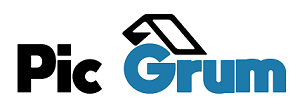Rhinoplasty in San Francisco is not just a cosmetic procedure to enhance your nose’s appearance. Your doctor might also recommend it for health purposes like enhancing your breathing. However, it has post-op risks that might affect your overall appearance. As such, it is crucial to choose a professional plastic surgeon. You will need to discuss your expectations with your doctor before the treatment to evaluate them and advise you on what the procedure can or cannot do. Though rhinoplasty is a standard procedure, most surgeons opt not to perform it because of the unexpected results it might have on your breathing and nasal form.
Who is an ideal candidate for rhinoplasty?
Your surgeon might recommend rhinoplasty if you have any of the following issues:
- Post-traumatic deformities
- A nose that appears too narrow or too wide
- A deviated or twisted nose (asymmetrical face)
- A bump on your nose’s bridge (dorsal hump)
- A bulbous, rounded, fatty, or disproportionate to the rest of your facial features (prominent nasal tip)
- A drooping nasal tip (a less than 90º angle between the upper lip and the lower nose)
- Nasal airwaves complications
Before operating on your nose, your doctor will consider nasal maturity, realistic expectations, and emotional maturity. You should understand why you need the procedure, the possible implications, and the limitations of the treatment.
What does the preparation for the procedure entail?
Before going for the treatment, you must meet with your plastic surgeon to discuss whether the treatment is ideal and might work well in your case. The appointment will include:
Physical exam
Your surgeon will suggest a thorough physical examination, including laboratory tests like blood tests. He will look at your physical features, paying particular attention to the inside and outside of your nose. The assessment helps the surgeon know the changes they might make and how your physical characteristics will likely affect your results. The examination is also crucial in determining the impact of the procedure on your breathing.
Photographs
Your doctor will take shots of your nose from different angles. He may manipulate the images using computer software to show you possible results after the process to help you know what to expect. The surgeon will also use your before photos to evaluate the results of your surgery concerning your desired goals.
Medical history
Besides your goals and motivation for rhinoplasty, your surgeon will ask questions about your medical history, including your past surgical procedures, the medications you might be taking, and your experience with nasal obstruction. The doctor might not suggest the process if you have a bleeding disorder like hemophilia.
Expectations
You will discuss what to expect from the process and your motivations with your doctor. The surgeon will state what rhinoplasty can and cannot do, helping you have realistic expectations. For instance, patients with smaller chins might need chin augmentation to prevent the small chin from giving an illusion of an oversized nose. Though the boost might not be necessary, it will help balance your facial profile.
Rhinoplasty is a cosmetic treatment that requires professionalism. A poorly-done procedure might give illusions of an oversize or undersized nose. Contact your plastic surgeon if you think you have issues with your nose to know how rhinoplasty can help resolve the issue.


Comments are closed.